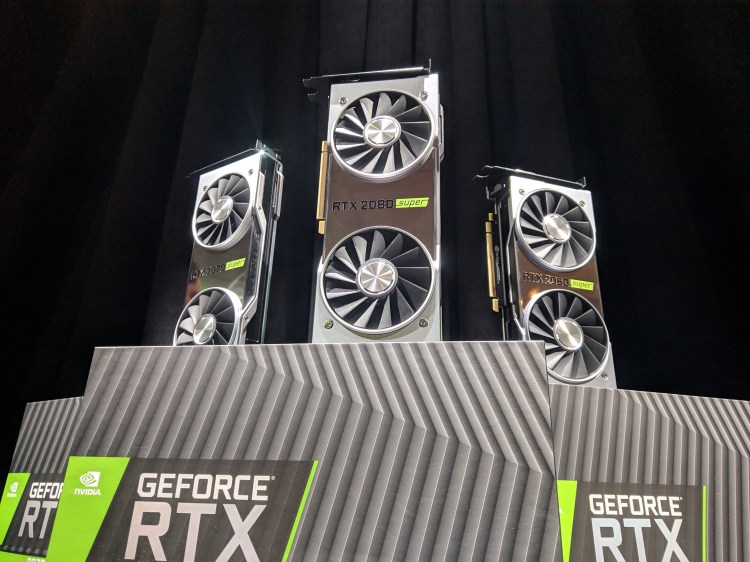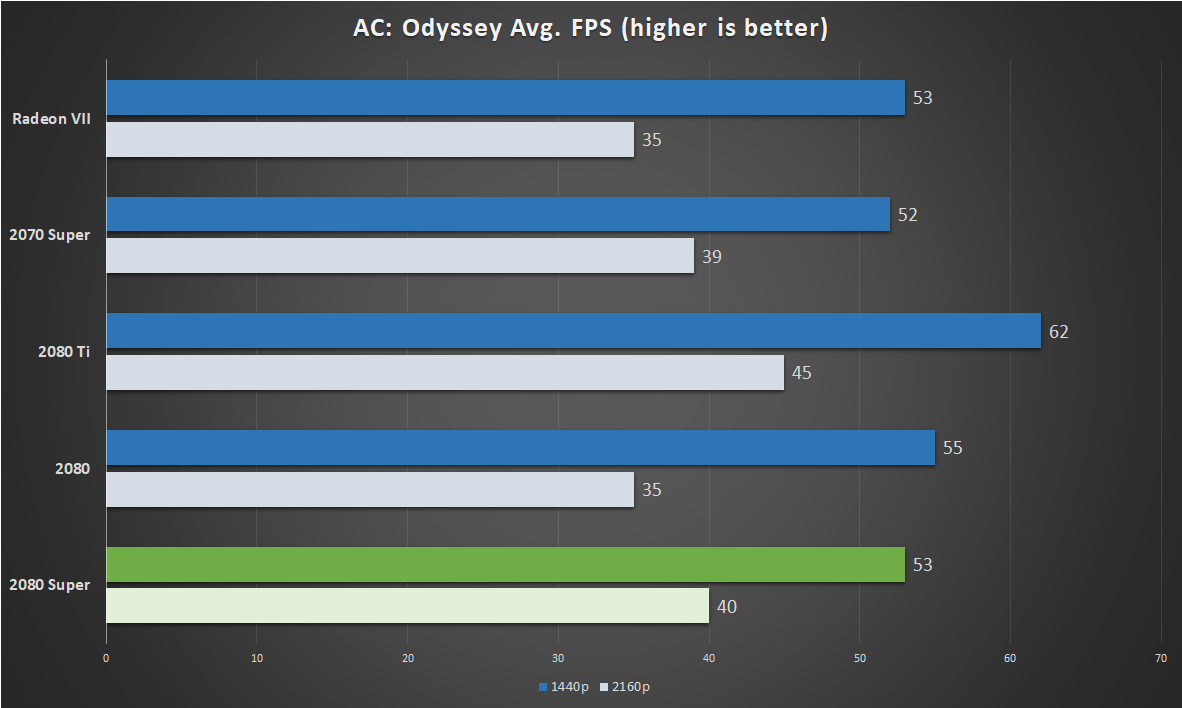If you are in the market for a $700 GPU for 4K gaming, you really have one option: the Nvidia RTX 2080. That will soon morph into the RTX 2080 Super, which is a beefed-up version of the card with better specs for the same price.
You may have noticed that I haven’t mentioned AMD, and that’s because it still isn’t really vying for this part of the market. It does have the $700 Radeon VII … or does it? That card has sold out nearly everywhere, and AMD isn’t making more of them. And even if you could find it, a $500 RTX 2070 Super is faster in gaming (Radeon VII still owns for productivity, though).
AMD does have its new Navi architecture in the Radeon RX 5700 and 5700XT GPUs, but those are direct competitors for the RTX 2060 and RTX 2060 Super. An RX 5900 could be coming, but it’s likely still a ways off. The RX 5700XT uses a lot of power, and AMD will need to improve its efficiency.
Why does all of that matter for the RTX 2080 Super? Because this is exactly the kind of card you would expect to get from a company that isn’t feeling a lot of pressure from competitors.
What you’ll like
Performance
The RTX 2080 Super is a bit faster than the 2080. It’s nothing like the jump in performance for the 2060 Super and 2070 Super. Instead, it feels like the Super is able to squeeze a few more frames out of some games. And that makes sense when you look at the specs.
The 2080 Super has 3,072 CUDA cores where the 2080 had 2,944. For the clock speed, 2080 Super runs at 1,650MHz and boosts up to 1,815 MHz. The RTX 2080 OG had a base clock of 1,515MHz that boosts to 1,710MHz. The 2080 Super also has slightly more memory bandwidth at 496 GB per second over 448 GB per second. That improves its productivity performance. It also helps with streaming in high-definition textures.
Let’s take a look at the benchmarks.
The test bench
- Motherboard: Gigabyte Aorus X570 Master
- Memory: G.Skill Trident Z Royal 16GB 3600 MHz
- GPU: GeForce RTX 2080
- Storage: Gigabyte PCIe 4.0 2TB
- Cooler: Hyper 212 Evo
- PSU: EVGA 800W
I tested the Radeon VII, the 2070 Super, the 2080 Ti, the 2080, and the 2080 Super.
Assassin’s Creed: Odyssey
Odyssey was one of the anomalies in testing. Typically, Ubisoft games love memory bandwidth, but the 2080 actually came out ahead of the 2080 Super at 1440p. I run every test three times and take the average, so I think I’m going to chalk this one up to driver optimizations.
For 4K, however, 2080 Super runs 15 percent faster than the 2080.
Counter-Strike: Global Offensive
This Counter-Strike test is indicative of what I saw in most games. The 2080 Super is faster than the 2080. But that improvement was only 2% for 4K and less than 1 percent for 1440p.
You’re going to get more frames per second from the Super, but not a ton more.
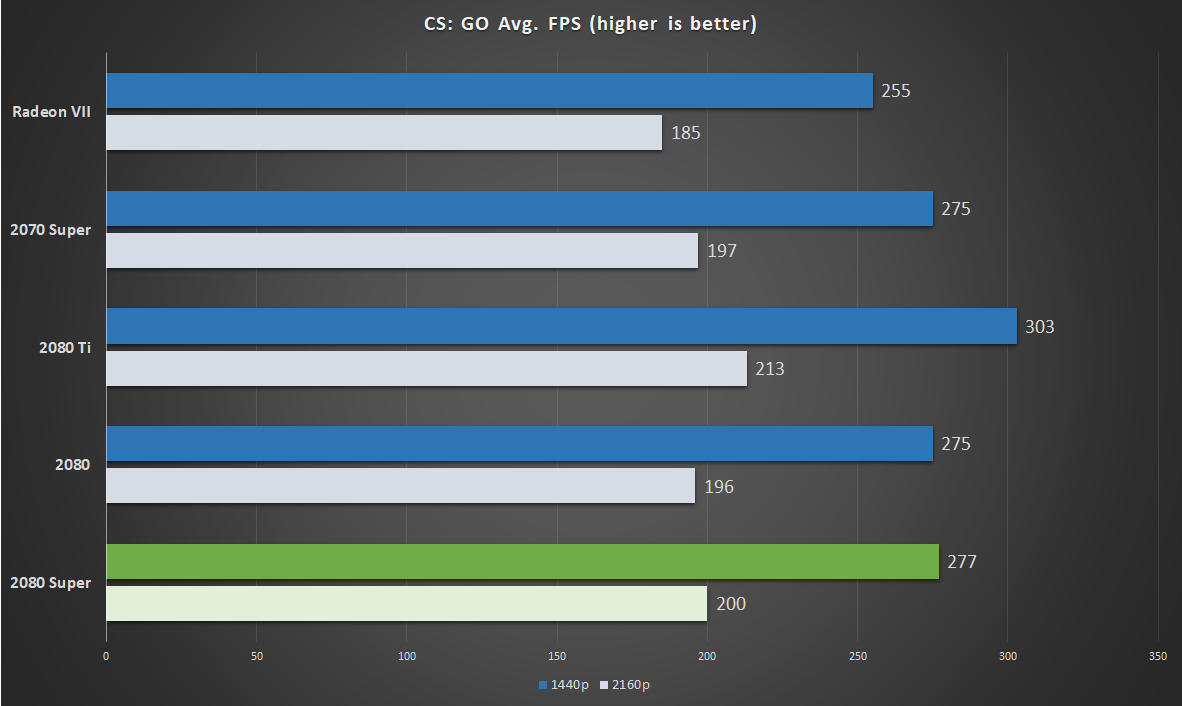
F1 2019
The 2080 Super squeezes out a 4.5% increase over the 2080 in F1 2019.
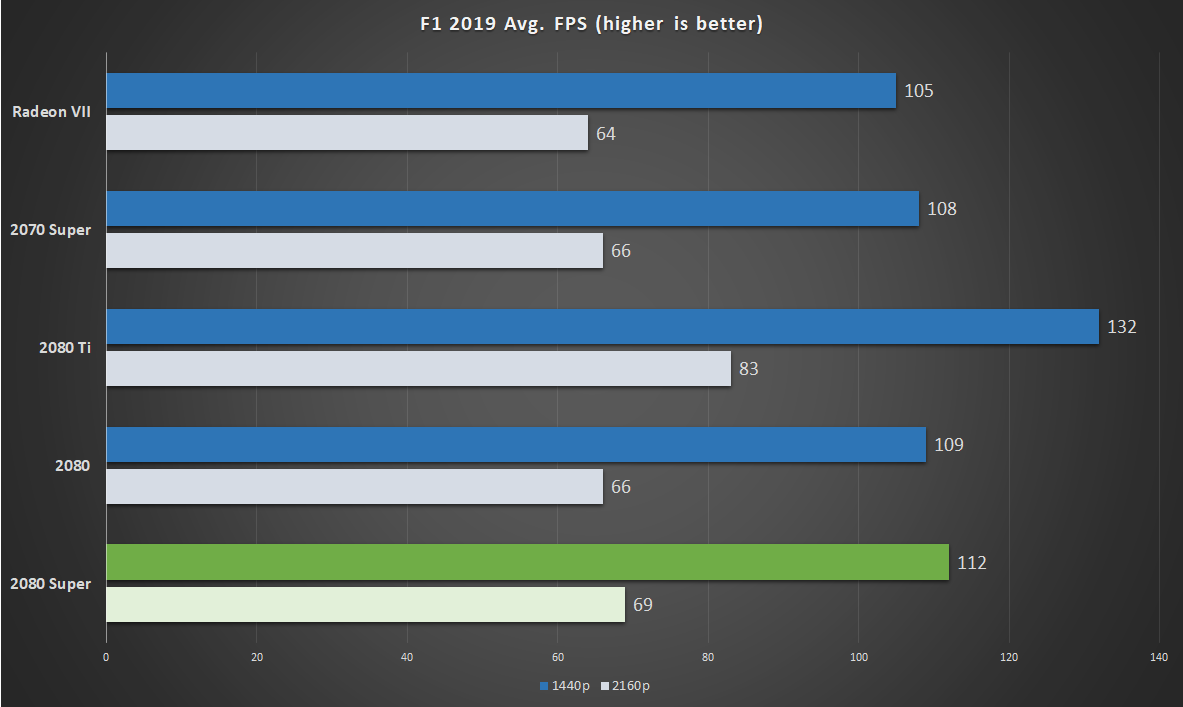
Final Fantasy XV
For Square Enix’s epic role-playing game, you’ll get a 7% jump in average frames per second at 4K.
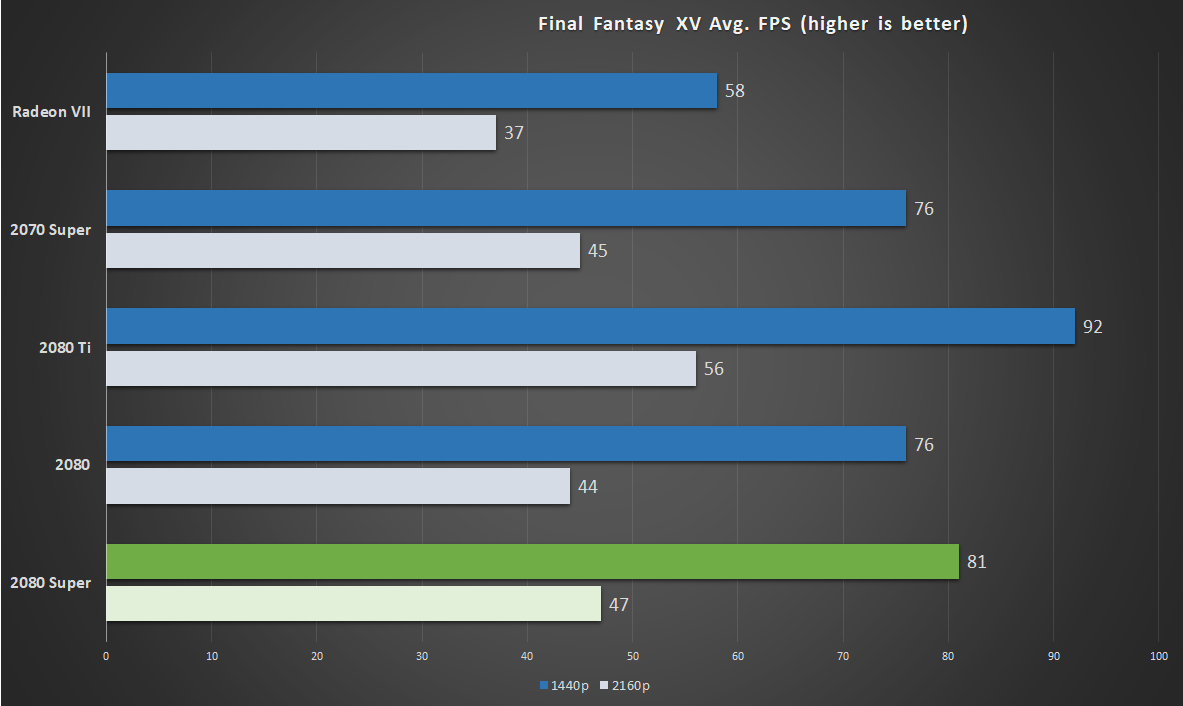
Hitman 2
Hitman 2 is relatively flat across both. The Miami level that I use for benchmarking relies heavily on simulation, which taxes the CPU.
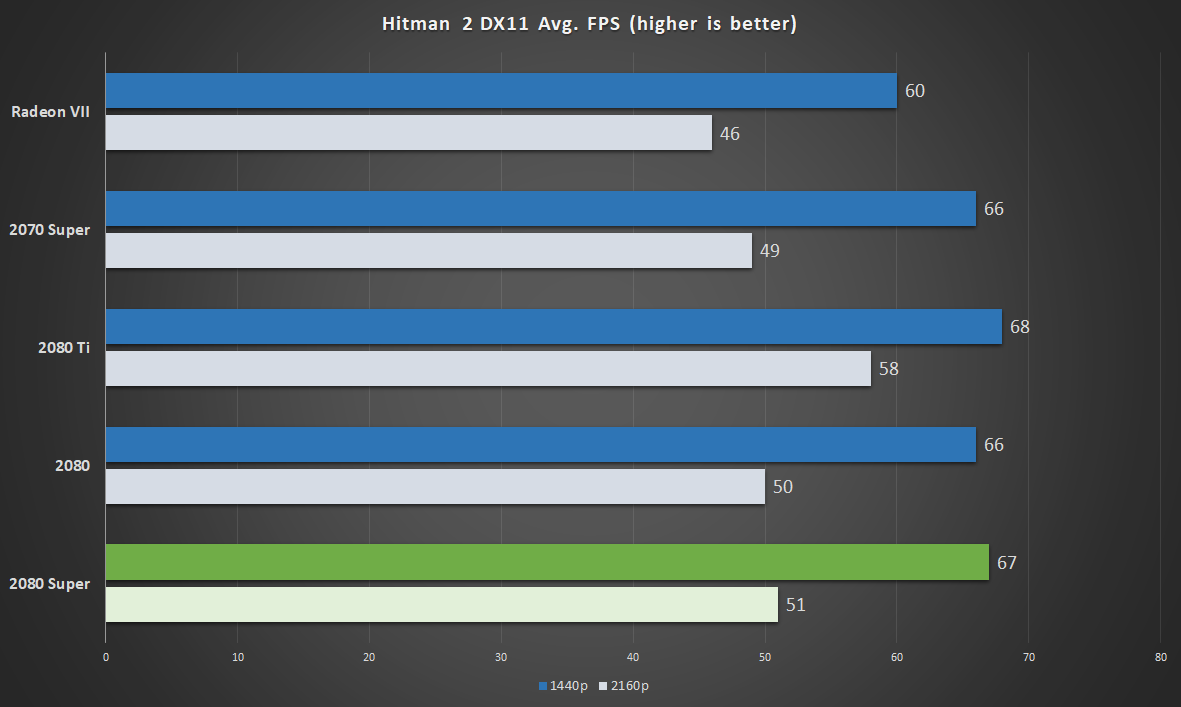
Total War: Three Kingdoms
Total War: Three Kingdoms is up 6.5% for 4K.
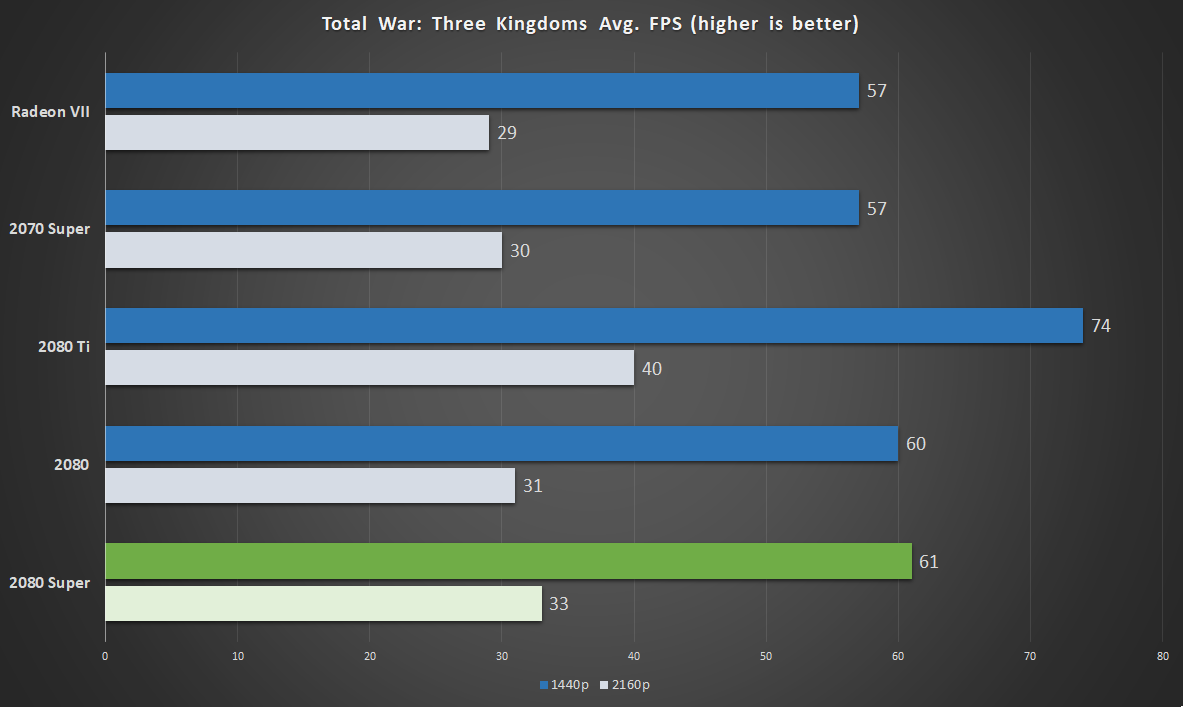
Metro: Exodus
Finally, Metro: Exodus sees a whopping 25% jump at 1440p for the 2080 Super. But it’s only 3.5% faster than the 2070 Super at 1440p, which seems far more in line with how the card has performed so far.
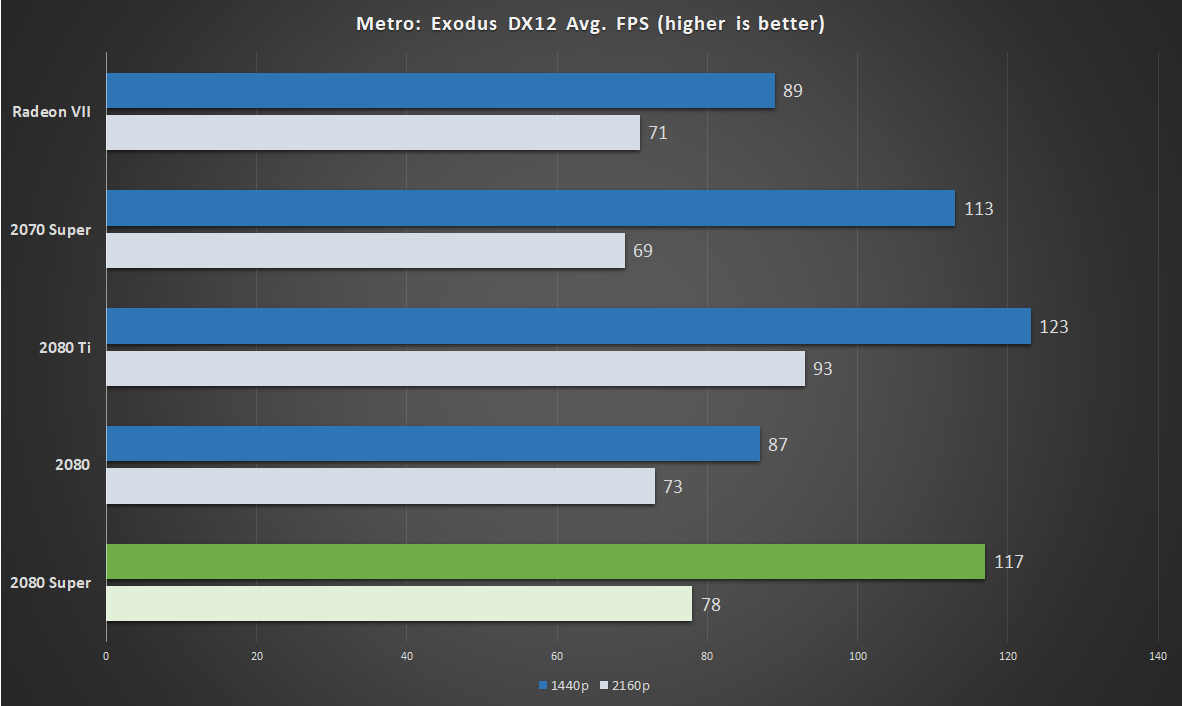
It’s a great 4K card
The 2080 Super is honestly a great card for 4K gaming. You can pull off 2160p with the RTX 2070 Super, but you’ll hit 60 frames per second much more frequently with the 2080 Super instead.
This is also with minimal hitching. I compared frametimes to see the 1% and 0.1% low average framerates for the 2080 Super, 2080 Ti, and 2080, and all three drop almost the exact same frames in my testing. The 1% and 0.1% low is the average of the slowest 1% and 0.1% of all frames.
I’m not including any charts because the data just isn’t that informative in this case.
What you won’t like
Super or not, the 2080 isn’t a great value
Ever since Nvidia launched its RTX lineup of GPUs, the 2080 was always the odd one out. At launch, the 2070 was a pretty decent value and the 2080 Ti was the most powerful consumer GPU ever. Now, the 2070 Super is even better deal. But the 2080 Super didn’t accomplish the same thing.
When I take the average framerates for all the tests across each card, the 2080 Super is only about 6 percent faster than the 2070 Super. But it’s also $200 more at $700 versus $500.
If you try to look at the value of something like dollar/frame-per-second (which is not something you can apply universally), the 2070 Super is a much better deal. You’re paying about $5.70 per frame for the $500 card as opposed to $7.60 per frame for the 2080 Super. For comparison, the original 2080 comes out to about $8 per frame.
To be fair to Nvidia, this is how product segmentation works. High-end cards experience a lot of diminishing returns. The best bang-for-your-buck is always going to come in on the lower end of the spectrum. It takes a lot more energy to go from 250mph to 260 mph than it takes to go from 0mph to 100mph.
Conclusion
I had high expectations for the RTX 2080 Super. Nvidia may already have the RTX 2080 Ti, but that’s a mislabeled Titan. So I was expecting the 2080 Super to deliver a performance increase comparable to the GTX 1080 Ti versus the GTX 1080.
That’s not what the RTX 2080 Super is.
And in retrospect, I should have realized that. Nvidia didn’t raise the price over the 2080. And AMD doesn’t have anything to compete, yet.
But if you need a 4K graphics card, this is probably the one to get. Sure, the 2080 Ti is significantly better, but it’s also still $1,200. For $700, you can’t do better than the 2080 Super.
The Nvidia GeForce RTX 2080 Super is shipping now for $700. Nvidia provided a sample unit for the purpose of this review.
